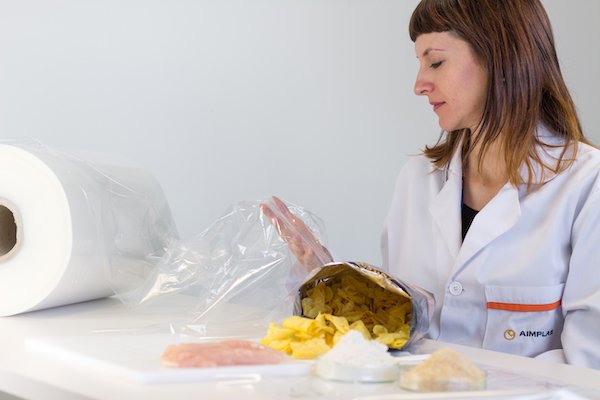
Specifically, innovative, efficient bioplastic production processes were developed to package food using renewable materials that are also recyclable and could replace conventional fossil fuel-based materials. These bioplastics include polyhydroxyalkanoate (PHA) and polyglycolide (PGA), which were used to develop three different bio-based active packaging systems, specifically designed to package fresh chicken meat, cereals and snacks.
One of project’s innovations was the formulation of bacteriophage-based coatings that considerably reduce the proliferation of Salmonella bacteria in chicken breast samples packaged in a modified atmosphere. The project successfully addressed one of the problems faced by packaging with barrier properties: in order to protect food, packaging must be made up of complex multilayer structures that are either difficult or costly to recycle. However, all the packaging systems developed by the REFUCOAT Project can be recycled and/or converted into compost, making them a promising sustainable alternative.
Lorena Rodríguez Garrido, Packaging Researcher at AIMPLAS and scientific co-ordinator of REFUCOAT, said: “Packaging must be recyclable and must also maintain the barrier properties that help protect packaged food. Current packaging has a complex multilayer structure and is made from non-renewable sources. It provides all the protective functions but is difficult and expensive to recycle. REFUCOAT aims to replace current packaging with more sustainable, better-performing alternatives.”
The REFUCOAT Project focused on three main areas: developing active coatings for food packaging films that use bacteriophage organisms; using low-quality flour as a base to produce PHA,; and developing an efficient production process for PGA, a completely biodegradable material with excellent water barrier properties. Until recently, this solution had been too expensive to use to replace fossil fuel-based materials.
The REFUCOAT Project ended in October 2020 after successfully validating all the new packaging structures and comparing their performance with metallised packaging. Tests were also carried out to compare the products’ shelf life and biodegradability with those of current conventional packaging on the market.






